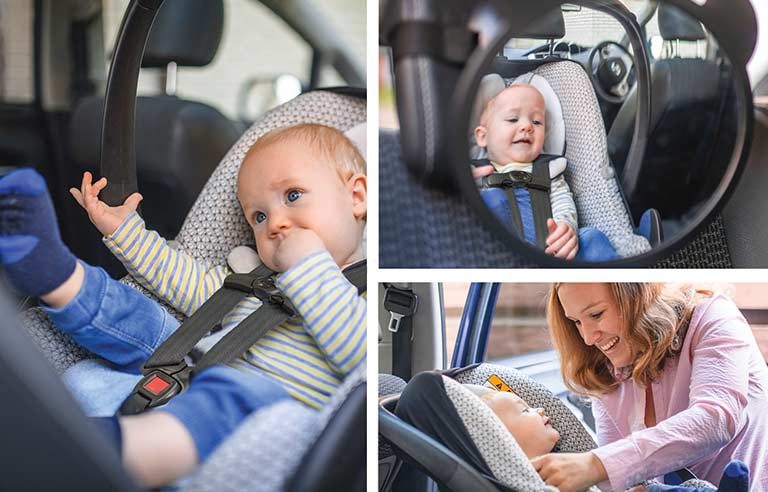Kids and hot cars
‘Not just a summertime issue’

Why your parked car is a concern
With more parents working at home during the COVID-19 pandemic, cars parked in garages, driveways and along the street are a greater concern.
NoHeatStroke.org reports that more than 25% of child deaths in hot cars are attributed to a child gaining access to a car. Although a child can get into an unlocked car, they may not be able to get out.
“The key fob is not a toy,” Ritter cautioned. “Keep your doors locked.”
Helpful reminders
Reminding yourself about your child being in the back seat is as simple as your left shoe. It’s one of many objects that can help parents and caregivers avoid the tragedy of a child’s death in a hot car. The solution can involve common items that you place near your child or with you in the front seat.
When you exit the car without that item or see a unique item with you, it’ll trigger your memory of your child’s presence in the back seat. Artuso and Ritter offered some suggestions:
- Take off your left shoe and put it with your child to avoid succumbing to distraction or a change in routine.
- Place your cellphone – one of the devices you interact with most – in the back seat.
- Place something of monetary value in the back seat, such as a wallet or purse.
- Keep a stuffed animal in a child’s car seat. When you place your child into the seat, move the stuffed animal to the front seat as a visual reminder that your child is traveling with you.
Learn more
The NSC offers a free online training course at nsc.org/hotcars to educate your family and caregivers about the dangers of hot cars.
“This really can happen to anybody,” Artuso said. “I encourage parents to have anybody who is transporting their child to take the training.”
The council and the NHTSA also have partnered with the National Child Passenger Safety Board to provide helpful safety resources at CPSBoard.org/heatstroke.
“Unfortunately, this has happened many times to loving, caring and protective parents,” Ritter said. “It’s really important for parents to talk about it. Just like you’re going to tell a caregiver what food to feed your child or any other safety issues in your home, you want to make sure they understand the safety issues of transporting your child.”
Post a comment to this article
Safety+Health welcomes comments that promote respectful dialogue. Please stay on topic. Comments that contain personal attacks, profanity or abusive language – or those aggressively promoting products or services – will be removed. We reserve the right to determine which comments violate our comment policy. (Anonymous comments are welcome; merely skip the “name” field in the comment box. An email address is required but will not be included with your comment.)
